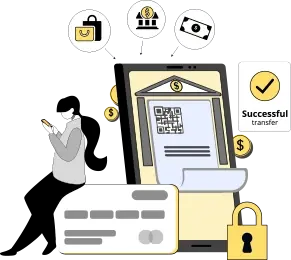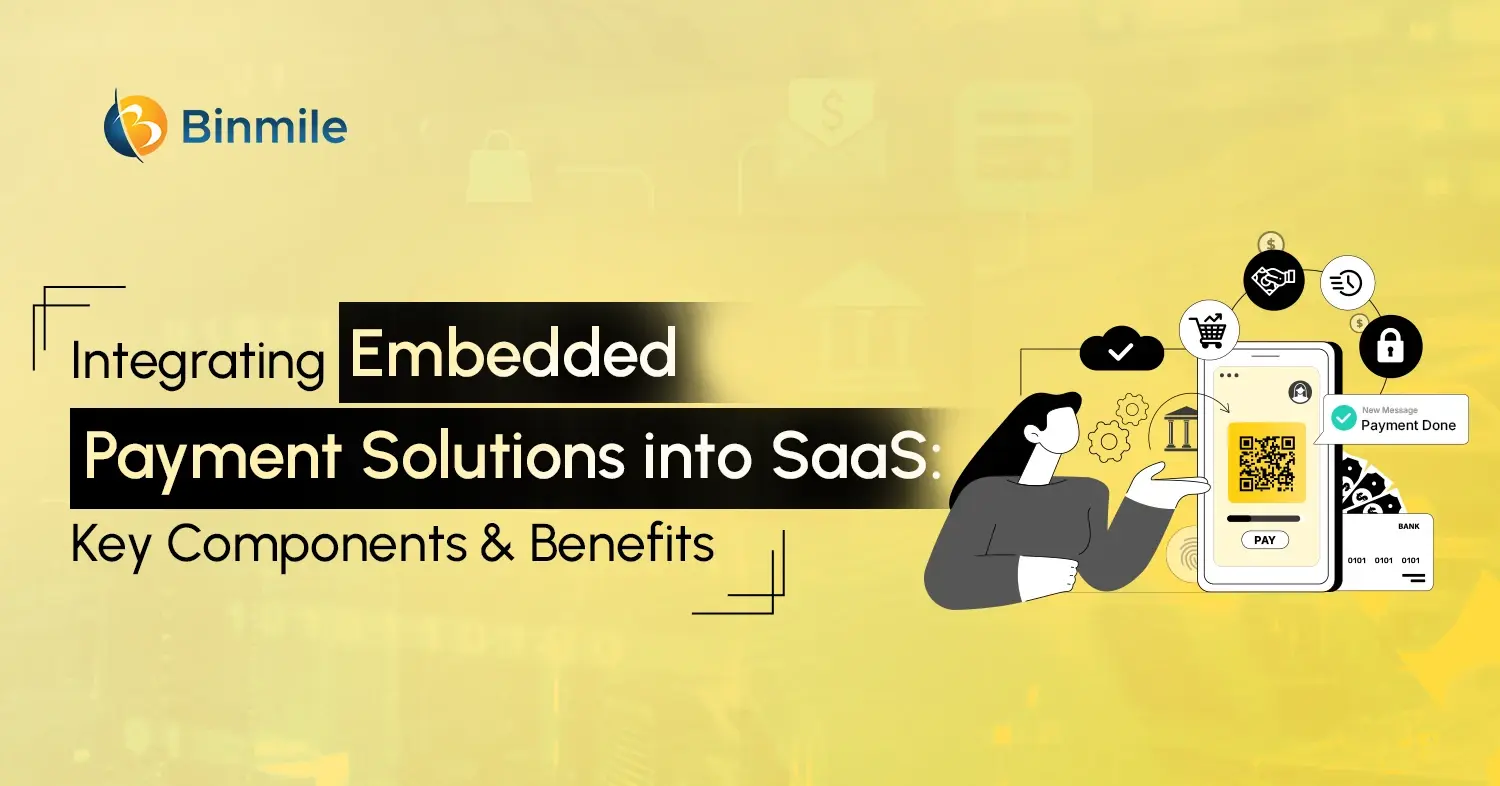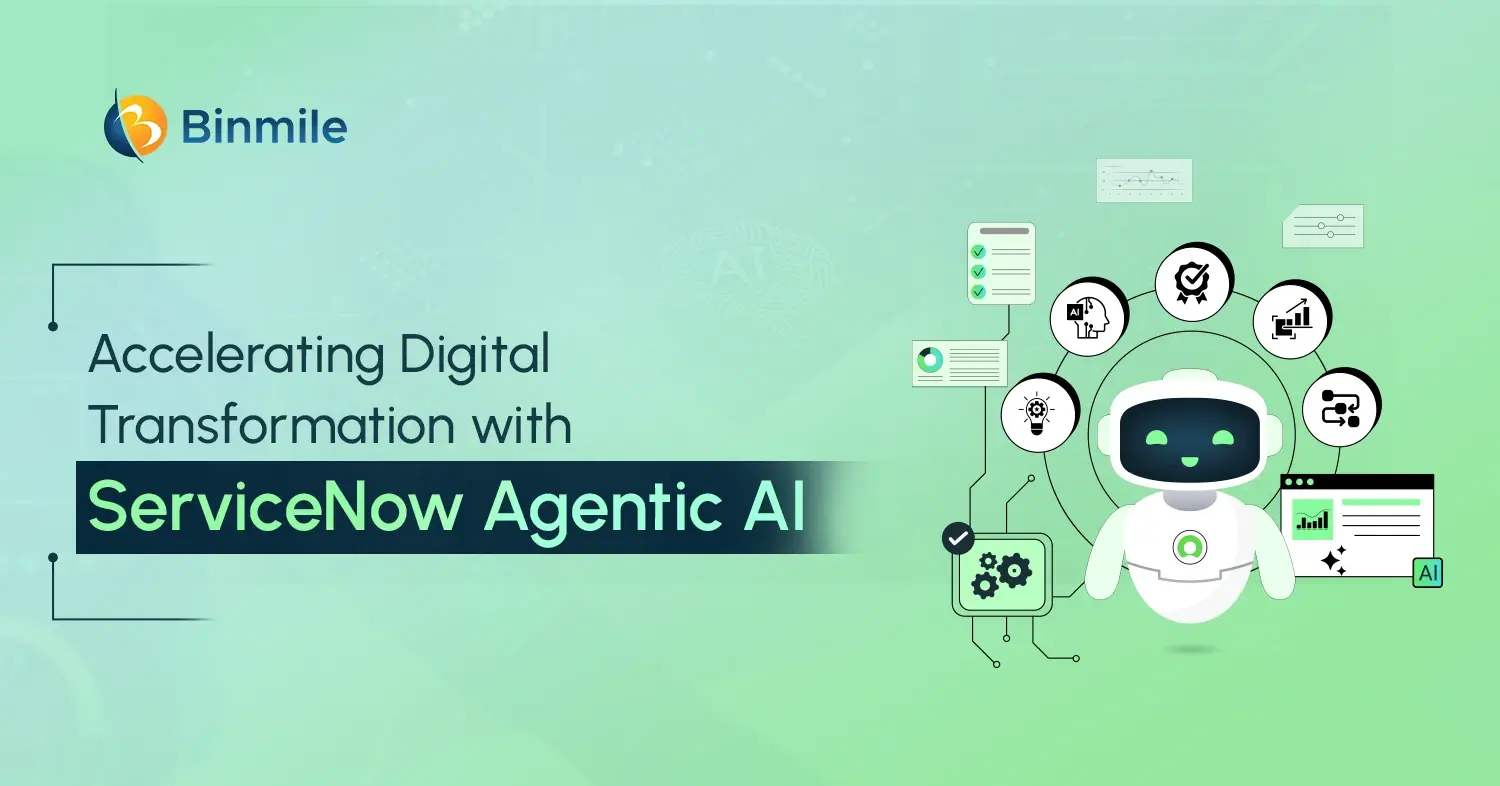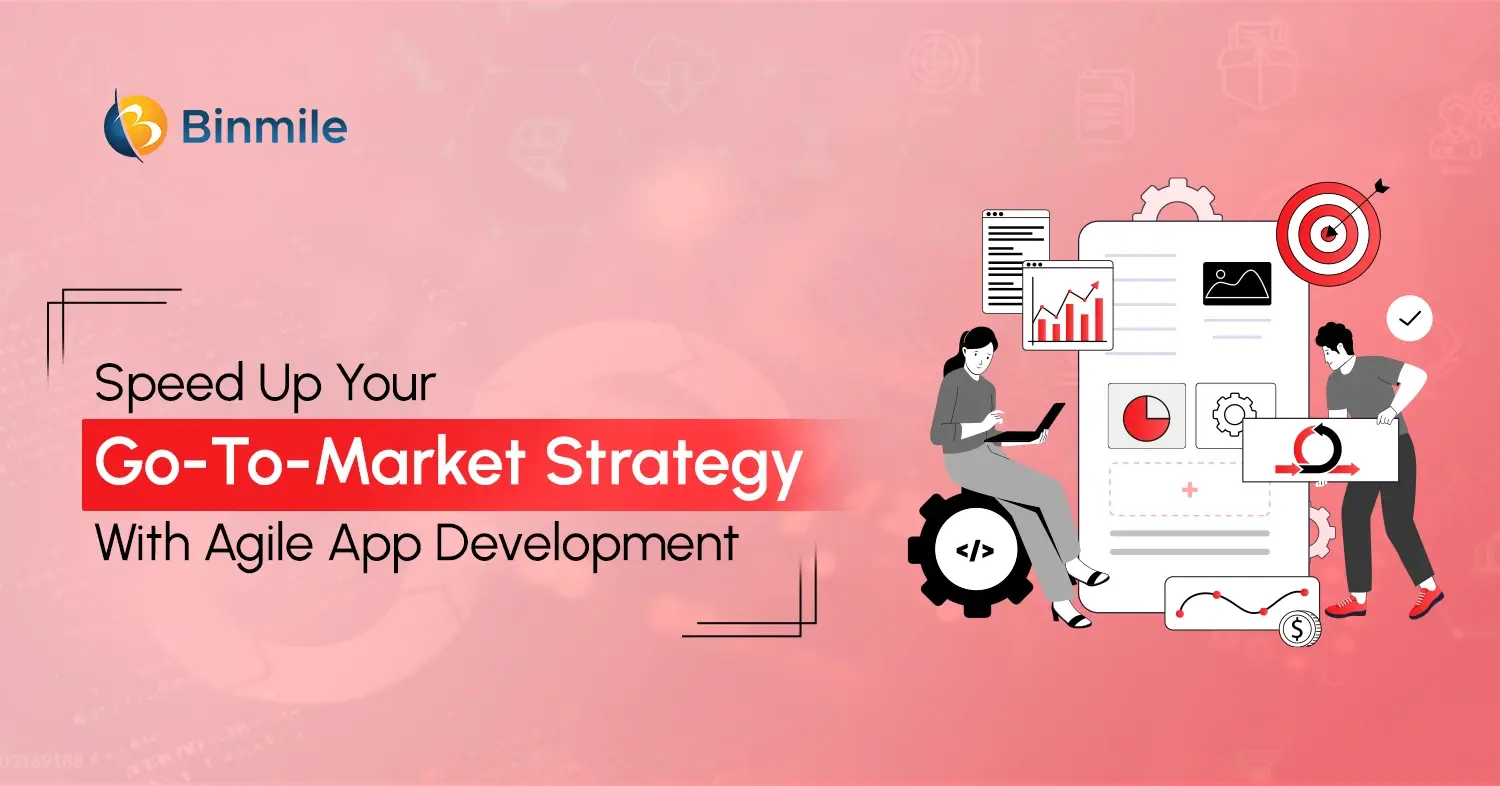With more and more businesses taking a digital route to selling their products and services, users expect payments to be seamless, secure, and seamlessly integrated into the software experience, not something added at the end. For SaaS platforms, leveraging an embedded payment solution is no longer just a “nice to have”; it has become essential for growth, trust, and a competitive edge.
The embedded payment industry is showing remarkable growth, expecting to reach $59 billion by 2027. This is approximately 84% of growth from 2023. This surge shows immense value and potential in embedded payment solutions for businesses to flourish globally. In this blog, we will talk about what embedded payments are, key components that one should keep in mind while implementing an embedded payment solution into their platforms, and a small comparison between traditional payment gateways and embedded payments.
What Are Embedded Payments?
Embedded payments are the payment capabilities that merchants can integrate directly into the software application or platform, which allow users to make payments without leaving the platform or being redirected to a third-party gateway. This matters as it creates a seamless, convenient customer experience, reduces friction, and cart abandonment. It also offers a new revenue stream while streamlining their operations.
Suppose you’re ordering groceries from an online app like BigBasket or Blinkit. You add items to your cart, and at checkout, you choose to pay using your saved UPI or card, all without leaving the app. Once you confirm the order, the payment goes through instantly, and your groceries are on the way.
This is what an embedded payment looks like in action. The payment feature is built right inside the platform instead of redirecting you to a third-party gateway or website. It saves time, reduces drop-offs, and makes the entire buying experience smoother for the customer.
Key Components To Implement Embedded Payment Solution in Your Platform
A well-built embedded payment solution is more than just a way to accept transactions; it’s a complete system designed to make the payment process smooth, secure, and seamless within your SaaS platform. Each component plays a crucial role in ensuring that payments are processed efficiently while maintaining compliance, trust, and a great user experience.
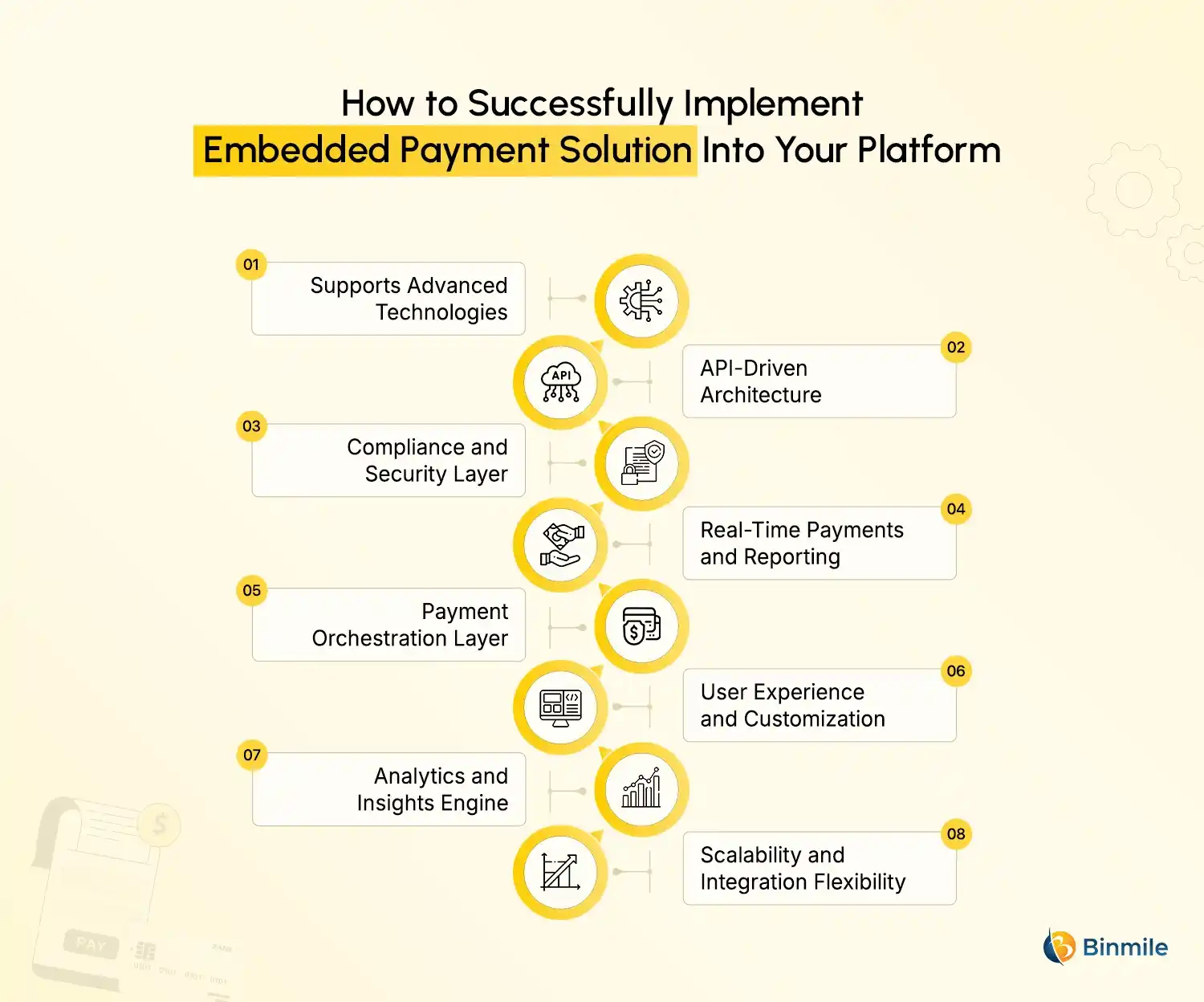
1. Payment Gateway Integration
The first step to creating an embedded payment solution is payment gateway integration. It provides a secure link between your application and payment processors and accounts for real-time transaction authorizations and settlements. A well-constructed gateway ensures seamless and secure transactions, enhancing customer retention. Newer gateways provide services across a multitude of currencies and payment methods, which allows SaaS platforms to launch into new global markets and new payment processing regions with little friction.
2. API-Driven Architecture
APIs enable embedded payments. They provide an API-driven architecture where developers seamlessly integrate payments into the SaaS interface without sending the customer to a different, unrelated system. This improves brand loyalty and user trust, while built-in payment automation reduces the need for manual intervention for billing, subscription management, and refunds, which lowers the chance of operational inefficiencies.
3. Compliance and Security Layer
Payment systems are required to include trust mechanisms and must comply with PCI DSS, GDPR, and KYC/AML checks to ensure protection against fraudulent transactions. Security systems for embedded payment solutions include tokenization, encryption, and ongoing monitoring to protect the payment system. Robust compliance improves user trust and credibility of the embedded payment solution.
4. Real-Time Payments and Reporting
Instant transactions are now commonplace, and the ability to make payments in real time has become invaluable. Customers and businesses enjoy the convenience of instant visible transactions, quick settlements, and almost immediate fund transfers. Businesses that use SaaS payment solutions in conjunction with real-time analytics and reporting dashboards gain foresight into payment and payment trends, customer patterns, and payment operational efficiencies, which leads to even more informed and confident financial decisions.
5. Payment Orchestration Layer
Having a payment orchestration layer streamlines the workings of various payment gateways, processors, and acquirers. It identifies the best route for a transaction by assessing cost, performance, and reliability. Additionally, it offers flexibility to your embedded payment solution, providing businesses the ability to easily replace payment providers or adjust payment solutions to fit changing requirements.
6. User Experience and Customization
An embedded payment solution that is hassle-free and simple to use is a product of great UI/UX and customization. Custom branding and design of the interface improve the user’s payment experience and instill trust, which increases conversion rates, while also reinforcing the brand identity. Customers expect quick checkouts, minimal friction, and transparent payment flows.
7. Analytics and Insights Engine
Analytics integrated into an embedded payment solution enables businesses to discern transaction patterns to spot revenue leaks and possible fraud. Incorporating AI into analytics enables SaaS platforms to anticipate receipt trend variations, grasp client buying behavior, and propose actionable changes. Such analytics reinforces operational efficiencies and enhances strategic financial positioning.
8. Scalability and Integration Flexibility
SaaS platforms have associated user bases growing in tandem with transaction volumes. As such, the embedded payment solution should anticipate changes to accommodate growth. This enables the business to shift seamlessly between different payment structures, like subscriptions and one-time payments, adding new payment methods and providers, and withstanding sudden rushes in traffic while maintaining performance and safety. Such a payment infrastructure ensures that the business payment system expands in scope to meet the needs of the business.
Make every transaction effortless and secure with Embedded payments for seamless payment experience.
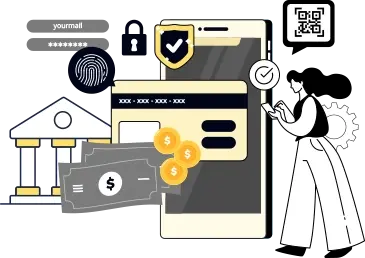
Embedded Payments vs Traditional Payment Gateways / Payment Orchestration
To decide what’s right for your SaaS, compare:
| Feature | Traditional Payment Gateway | Embedded Payment Solution |
|---|---|---|
| User Experience | Often redirects to external pages or third-party UI | Native in-app, seamless |
| Control over flow | Limited (branding, flow) | Full control (brand, UX) |
| Compliance burden | The provider handles much of it | Depends on whether you build or use PFaaS/PayFac |
| Revenue capture | Pay gateway fees, margins limited | More opportunities via fees, margins, and premium features |
| Speed to implement | Medium (depends on integration) | Can be fast if using an embedded payment solution provider or PFaaS |
Also, payment orchestration vs payment gateways: orchestration layers help manage multiple gateways, routing, failovers, etc. An embedded payment solution may include orchestration or work alongside orchestration tools.
Let’s take one example:
Imagine a business using a platform like Shopify to sell products online. When customers visit their website, they can browse, add items to the cart, and pay, all in one place. The seller doesn’t need to send customers to another payment page or connect a separate payment gateway manually.
That’s because Shopify uses embedded payment solutions rather than traditional payment gateways, which let businesses accept payments directly within their platform. It automatically handles everything, from transaction processing and refunds to currency conversion in the background.
This saves businesses a lot of time, reduces technical work, and gives customers a faster, safer buying experience.
Benefits of Embedded Payments for SaaS
- Better user retention and satisfaction: Embedded payments keep the transactions within the platform and provide a faster, more convenient payment solution. It also provides user satisfaction by providing a less frustrating checkout experience.
- More revenue per user or per transaction: Platforms with embedded payment methods can integrate payments into their core offering, turning them into a valuable new source of income.
- Operational efficiencies: Embedded payment solutions help Businesses to centralize payment processing, which reduces manual work, simplifies reconciliation, and minimizes the risk of errors.
- Faster go-to-market: By using the right partner, you can integrate payment functionality much quickly than building an entire payment stack yourself.
Conclusion
Embedded payments are transforming how SaaS platforms operate today. An embedded payment solution gives your users a smoother, more trustworthy experience, opens new revenue opportunities, and lets you take more control over payments rather than depending on external systems. By understanding what are embedded payments, selecting the right model, implementing securely, and maintaining real-time monitoring, your SaaS can stay ahead.
However, implementing these payment solutions into your platform can be a complex task. Partnering with businesses having experience in providing fintech software development services and software as a service consultancy is essential. Our experts at Binmile can help build software to support embedding payments into your product efficiently. We can help you define your payment flows and decide between building vs partnering, integrate embedded payment solution APIs with your existing SaaS stack, ensure compliance, security, and follow best practices, optimize UX and branding, so payment feels native, and build the monitoring, analytics, and support systems to continuously improve your payment experience.
Simplify payments, speed up your conversions, and create frictionless payment gateways.
